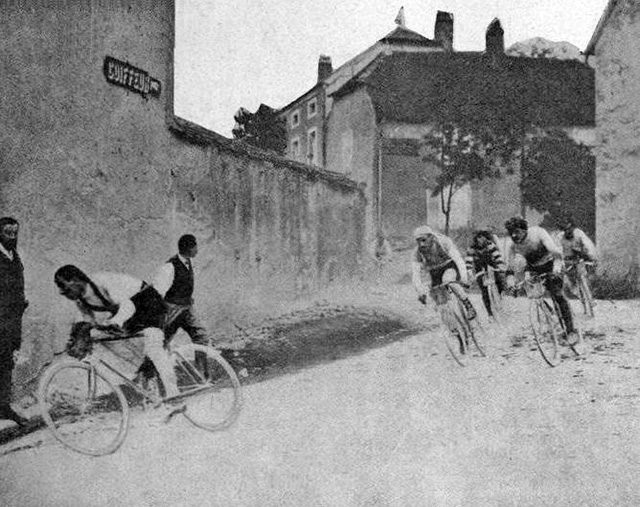The 1906 Tour de France, the fourth edition of the race, introduced notable changes and challenges that shaped its history. This year, the race expanded its course to cover 13 stages, an increase from previous editions, and included more diverse and difficult terrain. The total distance was approximately 4,545 kilometers (2,825 miles), starting and ending in Paris. The race route took cyclists through new regions, including the Alps, providing a tougher and more varied challenge for the participants.
 image from the 1906 Tour de France
image from the 1906 Tour de FranceRené Pottier emerged as the dominant force in the 1906 Tour, winning five stages and securing the overall victory. Pottier's performance was remarkable, as he established himself as the strongest climber by conquering the Col du Ballon d'Alsace and the Col de Porte, significant mountain passes in the race. His final victory margin was substantial, finishing over 31 minutes ahead of his nearest rival, Georges Passerieu.
Trivia
- A unique aspect of the 1906 race was the introduction of the 'flamme rouge,' a red flag marking the final kilometer of each stage, which has since become a staple in cycling races.
Related Pages
- Information about each of the tours
- Tour de France home
- About the World of Sport in 1906
- About Sport in France


 Upcoming Events
Upcoming Events